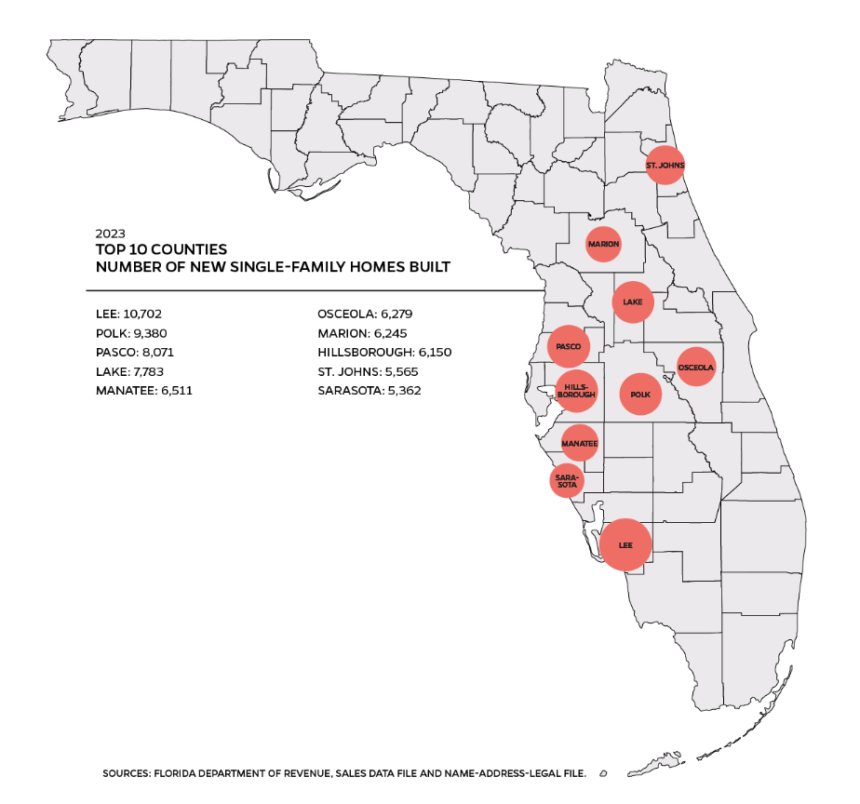Despite bolstering its construction activities and the availability of single-family homes, the state of Florida continues to endure shortages in its affordable housing stock that impact the workforce and retirees living on fixed incomes.
This is according to a 2024 annual report from the University of Florida’s Shimberg Center for Housing Studies, which examines “recent trends in housing production, home prices and rents, and the affordable housing inventory.”
“Despite growth in the stock, a significant number of Floridians continue to face cost burdens, spending a large portion of their income on housing expenses,” said Anne Ray, manager of the Florida Housing Data Clearinghouse at the Shimberg Center. “When families pay a large share of their income for housing, it’s harder to cover other critical costs such as food, transportation, and health care.”

Single-family home inventory reached 5.9 million units in 2024, with 71% of these being “homesteaded,” a term for permanent primary homes as opposed to rental, second or vacation homes. The state added nearly 139,000 single-family homes in 2023, the last year for which full information was available.
Despite this upward trend, however, residents making less than 80% of the area median income (AMI) continue to struggle to find affordable units. This is especially true “for those with incomes below 60% AMI,” the study found. “Statewide, an estimated 883,863 renter households with incomes below 60% AMI pay more than 40% of their income in rent.”
A household is typically considered burdened by housing costs if its share of income allocated to housing meets or exceeds 30%. In Florida, more than 346,000 of these cost-burdened residents are 55 or older. The report also found there are more than 883,000 cost-burdened renters in Florida today, a sharp increase from the 768,000 in 2022.
The state is poised to pay more attention to the issues impacting its older residents. At the end of 2024, the South Florida Regional Planning Council held an event called “Preparing for the Silver Tsunami: Planning and Policy Solutions for Southeast Florida’s Communities.” Officials discussed some of the impending challenges the region is likely to face as an even larger influx of older Americans relocate there.
The primary takeaway, according to reporting at the Palm Beach Post, is that “South Florida, already struggling to cope with a heavy concentration of senior citizens, will see those numbers significantly increase in the coming years.”
But a shortage of affordable housing availability is an issue playing out across much of the country, and the report described the state’s progress in construction of more homes as conducive to higher sales activity across the state.
“Home sales volume was higher in counties with significant new single family construction activity, including Hillsborough, Lee, Polk and Pasco Counties,” the report explained. “Sales volume was also higher in the populous Southeast Florida counties and Orange County. Nevertheless, on average 2023 sales were down by 16% over 2022 in the top ten counties.”






